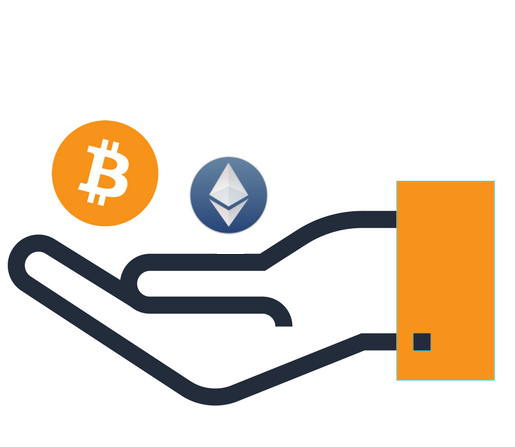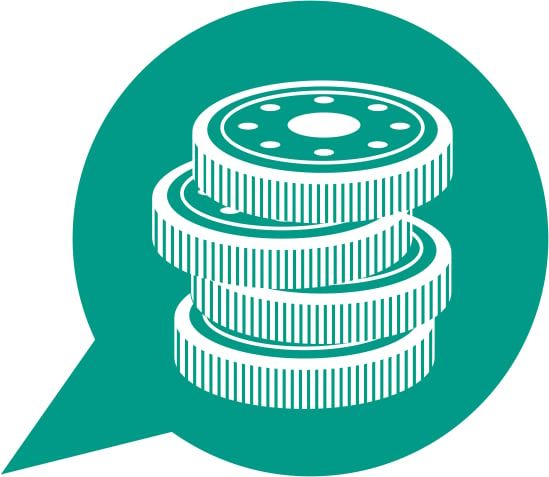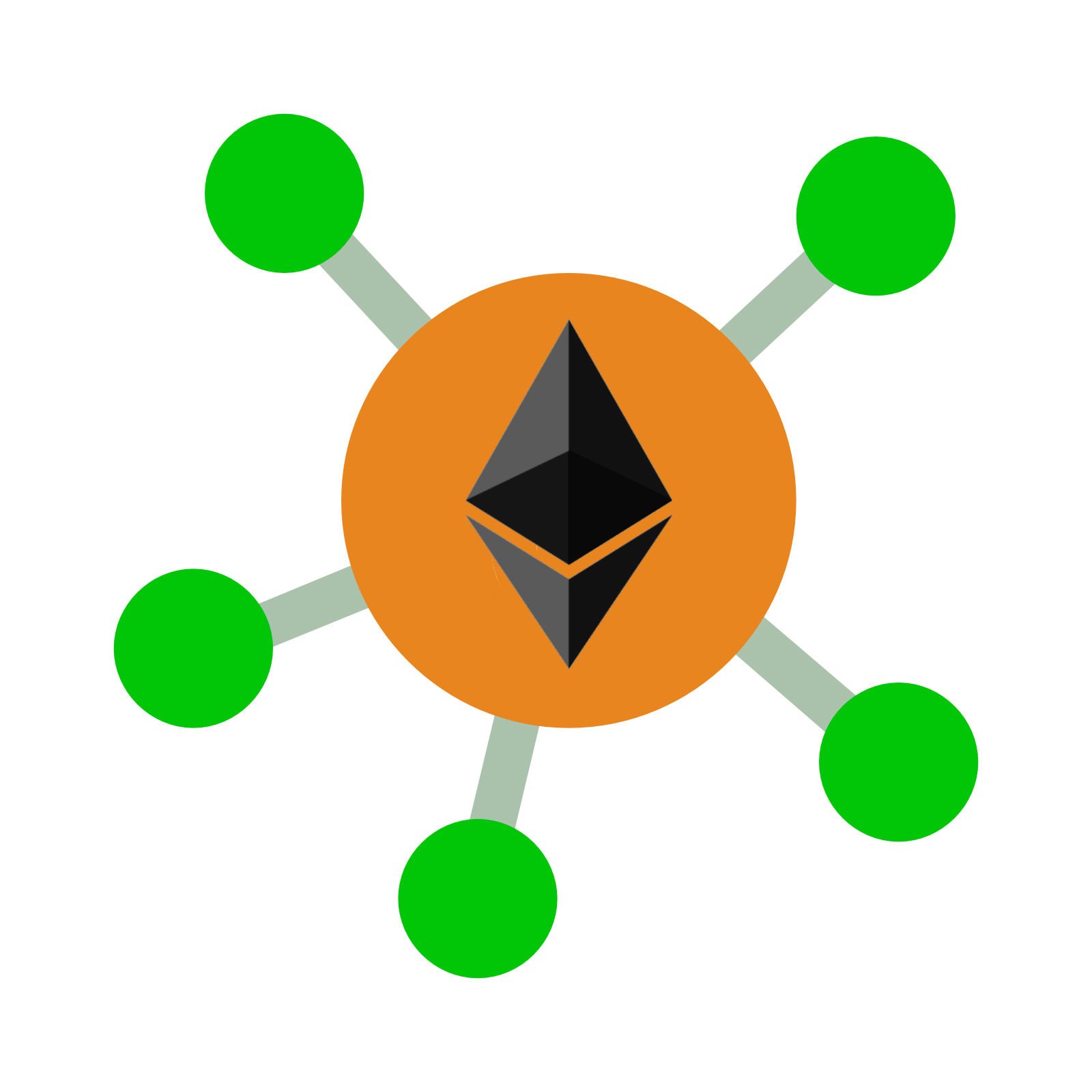What is Initial Coin Offering (ICO)

The cryptocurrency market has grown dramatically for the last few years, and this tendency does not seem to cease in the nearest future. And it’s not only Bitcoin that contributes to the new ecosystem. Although it still remains one of the most influential blockchain-based digital assets and the most valuable cryptocurrency (with the market capitalization reaching $40 billion), there is now a new and even better capital-raising platform called Ethereum. Unlike Bitcoin, it is not so much a cryptocurrency as a full-fledged platform that has introduced a completely new way to fund the development of new crypto-platforms. And this revolutionary fund-raising method is presented by an ICO, or Initial Coin Offering.
At the core of an ICO lies the opportunity for anyone with a computer (and the internet connection) at hand to invest in various projects, initiatives or ventures by taking part in a public token purchase. For startup owners, on the other hand, ICO becomes a means to bypass the official laws behind a standard capital-raising process regulated by venture capitalists and banks. As a result, ICOs become one of the most innovative financial mechanisms in the world of traditional investments.
In this article, we will introduce you to the very concept of an ICO and how it can change the financial relations of the immediate future. You will also learn some practical stuff concerning the usage of ICOs from the perspective of both the investor and the startup owner.

Table of contents
- Why have ICOs become so popular
- ICO: The Basics
- The Difference Between an ICO and an IPO
- Tokens
- How to conduct an ICO
- ICO Mechanisms and Models
- Alternative ICO Models
- Single-Round ICOs vs. Multiple-Round ICOs
- So what is the best model for an ICO to be secured and successful?
- Regulation of ICOs
- Tools and Services for Potential ICO Conductors and Investors
Why have ICOs become so popular
One of the main reasons behind ICO popularity is, perhaps, an intense interest in the Ethereum platform which has been having numerous successful projects built on its base for some time now. This has certainly caused a giant growth in ether’s value combined with user’s desire to reinvest in the platform. And for now it seems like this tendency is going to last longer than we might expect. Like any young technology niche, the ICO ecosystem is still full of many unexpected things that are only to be discovered, and it is yet vague which role it will play in the real world market.
In addition, because the majority of crypto-platforms (including Ethereum) have an open-source code, it becomes easy to copy the original software and add a few modifications for it to look like a new and wholly independent system. As a result, literally any startup can easily build and launch their own decentralized applications (DApps), decentralized autonomous organizations (DAOs) and, of course, cryptocurrency.
Ethereum itself provides a very flexible and extensible architecture, which certainly attracts many developers who wish to take the most of the platform, but it also creates value which serves a major driving force for people who would like to make fast and serious returns out of their investments.

ICO: The Basics
An Initial Coin Offering (ICO) is a fundraising medium which allows blockchain-based startups to raise money for developing their projects by issuing their exclusive cryptocoins (tokens) and later selling them to the public in exchange for a liquid cryptocurrency (such as ether or bitcoin). Considering the very nature of an ICO, some people prefer to call it simply a token sale.
The crowdsale element of an ICO is perhaps the most challenging in the whole process, as it requires developers to build an extensive international network of backers that could potentially spread awareness of their project. For supporters themselves, involving others in the project’s community can potentially increase the value of the tokens, thus giving an opportunity of larger returns in the future.
Why would someone like to deal with an ICO? From the developer’s point of view, it is a good way of creating something that would be to someone’s liking – especially when it is thousands of people who appreciate your ideas and believe in your success. As a developer you can let your community set its own rules regarding the whole project so that the whole interaction was as fair and democratic as possible. After all, these users are the ones who will be using your platform and create its value on the market.
As for the investors, not only do they create value of the project but they also gain enough personal profit from becoming early supporters. The earlier you invest in the project, the greater returns you might have in the future.
The Difference Between an ICO and an IPO
There is a certain similarity between an Initial Coin Offering (ICO) and an Initial Public Offering (IPO) that is being practiced in real world. In case with an IPO, a big private company or a startup offers its stock to the public for sale in order to expand or simply to gain a certain position on the global market. It is usually done with a help of a third party, namely an underwriting firm, that determines the main aspects of the stock issue:
- the security type;
- the most suitable offering price;
- the total amount of shares to be issued;
- a certain time period for the shares to be released to the market.
And, of course, after the stock is introduced to the public, any person with a considerable income can invest in the company becoming a full-fledged co-owner of its current and future capital.
With an ICO, tech-stratups also need to decide on the every aspect of their future cryptocurrency, specifically:
- the amount which is expected to be raised;
- the number of tokens to be issued;
- the type of cryptocurrency to be used for payments (e.g. BTC or ETH);
- the time period which the ICO campaign will run for.
However, unlike companies aiming at an IPO, they don’t have to involve a third party to define that.
Moreover, there are also “investors”that put their money into the project they would like to support. But unlike an IPOs, literally anyone can take part in an ICO, which makes it possible for people to invest as many as they can afford.
The crucial difference between the two public offerings, though, lies in the fact that when you buy tokens via an ICO, you do not acquire the right to the ownership of the company, like it usually happens with an IPO. As a result, when you buy a token, you obtain primarily an asset rather than a security, and its initial value is often so insignificant that it can be seen more as a donation rather than an investment in its traditional sense.
Furthermore, while IPO investments are usually made with long-term return expectations, ICOs have proved to become investments that bring quick and strong returns, which, perhaps, is the reason for their huge rise in the recent years.
There is also a strong connection between the increase of ICO popularity and the liquidity of cryptocurrencies: because it is relatively easy to convert cryptocoins into real money, people will more likely use ICOs as a profit-gaining source.
And, what’s even more important, IPOs are rigorously controlled by the government and banks, which makes it hard to optimize the system for the parts involved. ICOs have little to no financial or government regulation, which leads to a high tendency towards fraudulent activities on every level combined with a subsequent regular innovation of the cryptocurrency ecosystem.
Tokens
ICO tokens, in their turn, are digital coupons that are released on the blockchain which in this case plays the role of a distributed ledger. Depending on their specific use case, tokens can be equally seen as money or digital assets. For instance, you can use them to buy products or services or you can exchange them for other cryptocurrencies – in this case they behave mostly as a digital currency. However, the main reason for an investor to keep the acquired tokens is that their value can significantly grow over time, which makes them being a bit similar to shares. Apart from that, you can also see tokens as a sort of loyalty points which allow you to get an access to the features of a product or a service you invested in. Thus, tokens are not limited to being used within the given platform. They can be traded literally anywhere, but within the boundaries of a digital currency ecosystem.

Where You Can Issue Tokens
When you deal with an ICO, there are usually two possibilities of launching a new cryptocurrency. The first possibility assumes that you build a new platform from scratch, which means that your cryptocoins will maintain their own blockchain. The second one allows you to launch so-called ‘meta-tokens’ that are built on the basis of an existing platform, such as Ethereum, Bitcoin, NXT or others. The latter possibility seems to be more popular due to being less difficult in terms of technical implementation.
For instance, such projects as Counterparty and Omni (former Mastercoin) are built on the Bitcoin blockchain, and their own digital assets and services now successfully function on top of them. Ethereum, on the other hand, was the first independent platform with its own scripting language which allowed to build a more complex architecture including smart contracts, decentralized applications and other cryptocurrencies on its base. This opens up even larger opportunities for expanding the Ethereum ecosystem.
How Tokens Gain Their Value
While real-world currency’s value is now mostly determined by demand for it, tokens’ value grows out of its two primary qualities, namely tradability and use in decentralized applications.
Tradability of tokens depends primarily on the size of an ICO community which is involved in a token sale. Early ICO backers are usually motivated to buy tokens hoping that the project they invest in will become successful. If the project fails to raise a necessary minimum of funds, the money is returned to the backers with an ICO campaign declared unsuccessful. However, when the fundraising campaign ended up successfully, the company gets backed enough to complete their project. Thus, the more tokens the company sells, the more profit it gets.
After an ICO is closed, people start to take the most of their tokens either by exchanging them for other cryptocurrencies or by using the platforms’ services. From this time on, tokens become globally traded on specialized online exchanges that handle cryptocurrencies, so any further growth in the cryptocurrency value will depend specifically on how many people are involved in the platform’s ecosystem and how actively they use it. This often creates an additional incentive for existing users to attract new members to the platform, thus contributing to its further growth.
Token Exchanges

The main purpose of these exchanges is to create a secondary marketplace where cryptocurrencies can be exchanged for bitcoins in the same simple and convenient manner as it is possible with usual foreign exchange markets.
All the tokens taking part in cryptocurrency exchange trades tend to also have certain dynamics which is formed by their corresponding demand as well as daily trading actions on the market that influence their price. For now, the total value of all the existing cryptocurrencies equals more than $38 billion, with bitcoins making the most of this amount (yet).
Currently there are more than 40 various cryptocurrency exchanges, the most large and reliable of which are the following:
-
(especially popular in the US)
How to conduct an ICO
- Build your own blockchain-based platform or use one of the existing ones to create an ICO.
- Produce a white paper (a kind of a digital distributed ledger) to describe the main purpose of your project as well as its value in a full technical depth. It is then presented to your cryptocurrency community which reviews it and is later supposed to decide in your favor. Often a whitepaper is additionally supported by an early prototype of the project for users to try it out.
- Crowdfund the development of your project by initiating an early usage of your cryptocoins. Early buyers will be more incentivized to purchase your cryptocurrency if it is sold with a discount. In its turn, your cryptocurrency can be purchased for any major cryptocoin available on the market, e.g. bitcoin or ether.
- Raise the necessary (or even larger) funds and make sure they are secured from potential fraud attacks.

To make this process entirely successful and efficient, however, the development team needs to be as transparent as possible with their community. Each team-member must be knowledgeable in all the technological and financial aspects of the system they interact with on a daily basis. Every action performed by the company should put its best foot forward. Moreover, the team needs to be honest and open to both each other and the community members, taking part in public discussions of all the questions and concerns regarding the project, and always making investor protection the top priority of their venture.
Another important issue for a company is to provide a minimum and a maximum limit for the funds expected to be raised during an ICO. This is a big step towards meeting the requirements of a business plan which, in its turn, is another crucial document that should never be ignored. Otherwise investors are likely to lose their faith in a company’s ability to properly spend the money it was entrusted with.
So before you actually decide to deal with the cryptocurrency ecosystem, make sure you have the following:
- A technical understanding of the processes happening at the core of blockchain-based platforms;
- An understanding of all the processes involved in business development in general;
- An understanding of all the processes involved in marketing and sales.
You should also be able to prove to your crypto-community that the tokens you are to issue will instantly become tradable on cryptocurrency exchanges as soon as they are distributed among investors. This is primarily to ensure your cryptocurrency remains liquid for their holders.
Therefore, a perfect ICO should meet these requirements:
- a reliable team with sufficient expertise in the subject;
- a viable business model;
- efficient funds distribution;
- a certain legal framework;
- fraud protection;
- transparency on all levels of production;
- taking control over the currency release.
ICO Mechanisms and Models

Until recently, it has been a common practice among development teams during ICOs to either pre-allocate a fixed amount of tokens at a fixed price (capped sales) or to issue a fixed number of tokens but without any fixed budget, which allowed people to invest as many as they could afford (uncapped sales). However, both of these ICO strategies were proved to be inefficient and at times unprofitable.
Capped Sales
One of the problems with capped sales is that there is always a possibility that the company will create a heightened interest around its project thus making demand exceed supply. In other words, when the company issues a definite number of tokens and all of them get sold too fast, some users are doomed to be left behind. This is exactly what happened to the which lasted only for 30 seconds, with only transactions being successful. As a result, the majority of sold tokens is now concentrated in the hands of the very few wealthy users, which puts all the BAT token holders into an unequal condition. Moreover, all the transaction fees paid still managed to make their way into the hands of miners, which in total equals more than $15,000.
Uncapped Sales
Unlike capped ICOs, uncapped sales solve the problem of fixed sales by not limiting the capital raised, but still limiting the percentage of tokens available for purchase. It also has a positive outcome in that the company gets the ability to create a community around itself that will become big enough to sustain the value of their cryptocurrency (the latter is additionally supported by extending the ICO period to several weeks or even months). However, the real percentage of the given token supply is not, in fact, known, so once you buy in the ICO, you cannot know for sure how many percent of tokens you have acquired. This creates a kind of uncertainty about the token’s valuation which results in investors unable to predict the most perfect time to buy in the sale. In addition, an uncapped model allows companies to raise significantly larger sums of money, which often leads to the happy development team becoming less motivated to work on the project.
An example of an uncapped sale is the Ethereum ICO that ran for 42 days with a sell price equaling 2000 ETH for 1 BTC for the first two weeks. Later on, the price started moving up and reached 1337 ETH for 1 BTC by the end of the ICO. Despite certain flaws in the ICO mechanism, the company managed to attract a great number of participants together with more than $18 million in BTC equivalent (as of the year 2014), both of which have contributed enough to the steady growth of the platform.
Alternative ICO Models

The Reverse Dutch Auction (or Capped Auction)
This model was first adopted by in an attempt to prevent any undesired issues with standard models. The Gnosis team has programmed their ICO in such a way that the amount of tokens for sale would depend on the time-frame during which the ICO lasts. In other words, if the sale is not closed after the first ICO day, every investor receives 5% of the whole token supply; if the sale is not closed for two days, everyone receives 10% of the total supply; and so forth. In addition, the users were free to buy tokens whenever the wanted and at the most convenient price which, in this case, was regulated by the market and not by the company. Finally, although Gnosis had a capped amount of $12.5 million, the sum was not supposed to be raised too soon – thanks to seemingly safe conditions of the ICO.
However, the market appeared to behave irrationally, which led to all users buying tokens in the very first day of the ICO. The cap of $12.5 million was reached the very same day, so the participants only received 5% of all tokens, while Gnosis was left with remaining 95%. The resulting valuation of all GNO reached over $300 million, but, because most of it is in the team’s hands, it created a non-standard situation. Basically, now Gnosis are able to freely manipulate the GNO market, thus acquiring the property of a central bank. Which, certainly, does not meet the cryptocurrency’s initial philosophy.
Uncapped Auction
An Uncapped Auction combines in itself the qualities of an Uncapped Sale and a Capped Auction. Specifically, it should correspond to the following conditions:
- Investors can bid the most convenient price of tokens as well as their quantity;
- The company sets a fixed number of tokens and sells them gradually lowering the price until all the tokens are sold;
- Funds are not capped;
- Participants obtain a fixed percentage of the total token supply.
Capped Sales with Redistribution
This model should meet the following requirements:
- Participants bid a desired total spend;
- The company sets a fixed number of tokens and sells them at a fixed price, in proportion with each participant’s desired total spend;
- Payment surplus is returned to the users;
- Having a fixed number of tokens results in having a cap on the total amount raised;
- Participants obtain a fixed percentage of the total token supply.
According to this model, almost everyone can take part in an ICO. However, if demand exceeds supply, people will receive fewer tokens and, as a result, will get a refund.
Capped Sales with Parcel Limit
In this case, you have to deal with the following regulations:
- The company releases a fixed number of tokens and sells them at a fixed price on a first-come first-served principle until all tokens are sold;
- The company limits the number of transactions available for every user but also limits the highest maximum payment per each transaction;
- Having a fixed number of tokens results in having a cap on the total amount raised;
- Participants obtain a fixed percentage of the total token supply.
The main advantage of this mechanism is the ability to sell tokens to the wider audience, which, in theory, would help prevent tokens from being concentrated in the hands of the few. Moreover, that would help to sell all the amount of tokens without exceeding the capped raise.
Single-Round ICOs vs. Multiple-Round ICOs

This categorization of ICOs refers to the actual number of token sales a company can conduct in order to both sell their token supply and raise the desired amount. The majority of ICOs performed in the past were usually single-round sales. This meant that a company had only one chance to raise the required budget, and, if failed, the whole ICO campaign was to be declared unsuccessful. However, many ICO analysts and experts admit that it would be much better if, say, a company could first get an access to a small budget which would allow them to prove to their supporters that their project is worthy of resources spent on it. If the first fundraising round met investor expectations, the company could receive more money and so on and so forth until the project would become successful.
Introducing multiple-round ICOs would essentially solve the problem of Uncapped (and even capped) single-round token sales thus preventing development teams from getting too much money on the early stages of work, which, if ignored, can often lead to laziness and a sharp slowdown in the development process.
But how should multiple-round ICOs look like? There are a few examples of real ICOs that in part adopted some features of a multiple-round ICO and managed to gain necessary funds with the best outcome for both the team and its investors.
One of such ICOs is the ICO that took place in 2014. The company was selling a set amount of their tokens daily during several months in a row. Each day users could send various amounts of donation, and the resulting daily allocation would split among all contributors. So basically the whole ICO consisted of daily micro-rounds and lasted almost a year.
ran its main crowdsale during a single day of this May, but previously had managed to conduct half a year before the main one.
So what is the best model for an ICO to be secured and successful?
We think there are various possibilities as to how to design an ICO for it to be both effective and profitable for all parties involved. In his detailed , Vitalik Buterin, a co-founder of Ethereum, tries to find a consensus between the potential pitfalls of every model as well as their benefits. Specifically, he suggests the following solutions:
- A Multiple-Round Reverse Dutch Auction which should contain a relatively low sale cap. If the company fails to sell all of its token supply, the remaining funds should be put into a new auction within a few months period. In this case, however, the next round of sales should run with a 30% higher cap. This procedure is then repeated until all the tokens are sold.
- A Five-Year ICO Model. According to this one, you can sell any amount of tokens at a fixed price and then put 90% of the resulting revenue into a smart contract that will preserve the price floor that equals the previous token price * $0.9. As a result, for a 5-year period, the price ceiling will hyperbolically go up, while the price floor will start to linearly move down to zero.
- A Five-Year Daily Micro-Sale Model which is exactly what Angelshares did during their ICO, but with an extension of the process to five years (or even more) instead of a few months.
- A Reverse Dutch Auction with a Market Maker. Regardless of the initial sale cap, if the company fails to sell 100% of its token supply, the remaining funds should be put into an automated market maker that would regulate the price of the cryptocurrency. However, if the price continues to grow, the market will likely start selling tokens, but the good news is that the money earned during those sales can go directly to the development team.
Regulation of ICOs

So far, there is no official financial authority that would regulate ICOs, which is why the only means of providing security during token sales is the architecture of the cryptocurrency system itself.
Until now, there were numerous cases of fraud in the ICO market which resulted in serious funds losses that could never be recovered. Due to an increased interest in cryptocurrency and ICOs, many projects are rushing to take their bite of a crypto-cake often neglecting the importance of competence in such a risky and unregulated ecosystem. Perhaps that is why ICOs become more and more often called simply ‘crowdsales’ or ‘donations’ rather than IPOs of the crypto-world.
However, there is a tendency towards searching for a proper solution to solve this problem. Those dealing with cryptocurrencies and decentralized networks understand that without security there will be no trust in the system. But for the ICO market to grow, proper regulation could potentially attract much larger capital than it can do now.
While serious security improvements in the cryptocurrency ecosystem are still in progresst, the whole responsibility is put on potential investors (or simply users) that need to always think twice and consider both pros and cons of any venture they aim to support. Moreover, if you feel like you cannot afford to lose your money, it is often better not to invest anything at all.
The DAO Case
A quite predictable problem caused by quite obvious vulnerabilities in the DAO system has strongly affected both the organization and the whole cryptocurrency world back in 2016. The DAO was one of the first decentralized autonomous organization built on the Ethereum blockchain aiming to use a decentralized business model for establishing new commercial enterprises and non-profit organizations. In May 2016 the company launched a token sale which lasted for 28-days and resulted in raising , which later got the DAO ICO the status of the highest crowdsale of all time.
However, it soon appeared that the DAO system could not guarantee a sufficient data security due to a number of vulnerabilities, including a bug that was able to initiate a crash state in the transaction processing algorithm. The researchers behind that finding claimed the bug was caused by so-called “recursive calls” that would enable potential hackers to collect much more funds than they were initially supposed to.
Soon after the vulnerability issue had been exposed, the DAO was attacked by the user that took advantage of the aforementioned vulnerabilities in the system to steal over $50 million in ETH equivalent, which was around one third of all DAO funds. Luckily, the smart contract behind the given transaction required all the funds on the attacker account to be “on-hold” for 28 days (until it expires), the DAO team had some extra-time to get their money back. Their final solution was to hard-fork the system by invalidating and further rolling back all transactions containing the attacker’s code.
This controversial event then led to the Ethereum fork which split the platform into the old and new versions, where the former took the name Ethereum Classic and the newly created version remained to be called Ethereum.
Ethereum’s ERC20
The Ethereum platform is perhaps one of the most complex blockchain-based systems that needs to deal with lots of ICOs on a daily basis. This responsibility, together with a great deal of fraud cases in the past years (including the DAO hack back in June, 2016), largely shaped the way the company tries to solve various security issues. However, their methods are mostly concentrated around digital security, as the platform functions exclusively on the smart contract technology which is completely automated.
Currently, there is the ERC20 token standard designed exclusively for ICOs taking place on the Ethereum platform. This is basically a regulating element of the system that describes all the functions and events implemented by a smart contract. The majority of tokens issued on the Ethereum are ERC20-compliant, but there are also tokens that at some point deviate from this standard. Generally, this standard allows Ethereum smart contracts to successfully maintain all the accounts and transactions within the system. The downside here, though, is that while software security seems to be taken seriously, the ERC20 standard still cannot guarantee the 100% safety of users’ funds.
This document is an attempt of (an online exchange working with cryptocurrency) and other community members to create a legal framework consisting of the main guidelines regarding ICOs and their regulation. Specifically, it highlights the following issues:
- Can a token be considered a security from the US federal securities law point of view?
- For token issuers, how to properly design an ICO campaign for providing buyers’ security and the overall success of your crowdsale?
- A detailed securities law analysis of blockchain tokens.
This initiative was primarily established as a means of an effective legal assistance to all developers aiming to design high-end token sales that can not only bring profits but also provide a stable and safe financial environment where all the parties are equal in their rights and obligations.
Additional Steps to Take
There is also an important range of actions that can potentially secure all the members of the ICO community from any kinds of risks and fund losses:
- Active collaboration within the community. This is essentially important due to a frequent ignorance among the users about financial mechanisms and technologies they need to deal with. Which is why there needs to be a place for an effective informative/educational communication which would allow anyone, even a non-specialist, to feel more or less comfortable with all the processes happening in the ecosystem.
- A careful thought on every aspect of the project and a subsequent crowdsale. All the companies and startups that chose the cryptocurrency world as the basis of their business need to be careful and responsible enough to design a platform that will not only comply with the terms of the base system but will also provide a proper support to the members of their community thus stimulating their interest in the project and largely improving the overall market state.
- Introducing official regulators to the system could provide consumers with sufficient protection and operational certainty that would contribute to the stability of the cryptocurrency market as a whole.
Tools and Services for Potential ICO Conductors and Investors

If you took a real interest in the ICO ecosystem and want to learn more about it, either as a company wishing to raise money for their project or simply as an investor, you should definitely check out the following websites and services:
General ICO Information
– the reddit community dedicated specifically to existing and potential Ethereum investors. Here you can:
- find all the necessary information about ICOs;
- see regular updates from the cryptocurrency world;
- ask any question regarding the topic and receive feedback from other members of the community;
- take part in the market/price discussion and make your own predictions;
- get exposed to local memes and other types of content alike.
– another massive Ethereum-related reddit community which is mostly focused on technological issues of the platform but also various Ethereum-based projects discussions.
ICO Tracking and Monitoring
is a decentralized application which allows you to independently monitor the information about Ethereum-based tokens right from the blockchain it is located. This includes data regarding the token issuance history, detailed description and other secondary attributes that can be valuable to the user. Thus, the service contributes to a larger token transparency, which can potentially lead to a wider acceptance of the platform’s tokens in general.
is a website with a detailed review of all recent, current and upcoming Ethereum-based ICO projects.
There is also a number of ICO trackers that monitor all cryptocurrency-related projects throughout the web and create ICO rating lists in accordance with various criteria, such as whitepaper, roadmap, team, escrow and ICO conditions. Prominent ICO trackers include:
- – despite being an ICO tracker, it is also a large cryptocurrency research and news company which reports on all recent and upcoming ICOs.
Advisory Tools and Services for Project Teams
For those remaining confused about how to create a successful ICO there is a number of advisory companies that help startups prepare for their token sale and develop a steady financial framework that will prevent them from any potential risk after launching on the crypto-market.
- – the first investment bank specializing in digital finance and providing an extensive technological support to companies wishing to run a token sale and create their own digital assets.
- offers a wide range of ICO-related services, including the creation and subsequent distribution of tokens and crowdsale hosting.
- is a professional consulting firm that can provide you with a detailed investment analysis, create the necessary documentation for a future token sale as well as design a proper marketing plan.
- is a platform on which you can conduct a full-fledged ICO – thanks to their exclusive solutions for token development and structuring, issue and distribution, listing on all major online exchanges and providing a first-class smart contract management and support.
- know everything about ICO strategy and investments, so they can easily transform your project into a successful blockchain-based business by taking a good care of strategy building, smart contract development, marketing campaign, and many more.
Practical Solutions for Startups Aiming at ICO
- is a team of cryptocurrency and decentralized technology experts that specialize in custom blockchain development, spread awareness about the technological aspects of the cryptocurrency world and build innovative products that aim to facilitate all financial activities around the web.
- will help you develop smart contracts for your future tokens, thus eliminating the need for spending time on sophisticated programming stuff.
- can do an extensive audit of the existing application code in accordance with globally accepted blockchain standards and protocols; they also build and implement smart contracts by at the same time providing a for third-party teams to be able to build smart contracts of their own.
- is a blockchain-based platform for building high-end decentralized applications. To use the platform’s services, however, you will need to acquire and use their tokens (LSK).
- offers a great number of cutting-edge blockchain-based solutions to meet the needs of every aspiring team wishing to launch their project on a blockchain. One of their clients were the above mentioned Lisk, by the way.
- is a proven blockchain applications development company which uses up-to-date financial technologies and a number of self-made solutions to help startups build their own blockchain-based applications.
The DAO tokens have been declared securities by SEC
In their (as of July 26, 2017), SEC (US Securities and Exchange Commission) came up with an official statement as for their exclusive investigation process related to the DAO massive fraud case that took place on June 16, 2016. It was after all concluded that all DAO tokens that were purchased during the ICO are, in fact, securities which fall under the regulation of the federal securities laws. Moreover, from this time on, all blockchain-based projects run by the US citizens need to register their token sales in accordance with the appropriate laws. In addition, online token exchanges will also have to be registered, as they deal with all token trade operations as soon as tokens appear in their exchange lists.
The main purpose of this decision is said to be related to investors’ protection – registered tokens will be monitored by the government, and thus every financial operation with these tokens will be subject to the federal regulation. What’s even more important, SEC hopes that the ICO and token-exchange regulation is likely to increase investors’ awareness of the technological and financial processes in the cryptocurrency ecosystem. All that is expected to prevent potential fraud activity that could lead investors and companies to losing their funds.
Considering the fact that the DAO case was hard to prevent, SEC is not going to penalize the company for a law violation, although it does consider the DAO ICO being an unregistered token sale. While many people see ICOs as being equal to a crowdfunding activity just like any crowdfunding campaign on Kickstarter, SEC failed to find any evidence of meeting the requirements of the Regulation Crowdfunding exemption in the DAO case. This, again, leads to the necessity of registering future ICOs in accordance with the federal security laws.
The SEC’s final statement is the following: “The federal securities laws apply to those who offer and sell securities in the United States, regardless whether the issuing entity is a traditional company or a decentralized autonomous organization, regardless whether those securities are purchased using U.S. dollars or virtual currencies, and regardless whether they are distributed in certificated form or through distributed ledger technology.”









